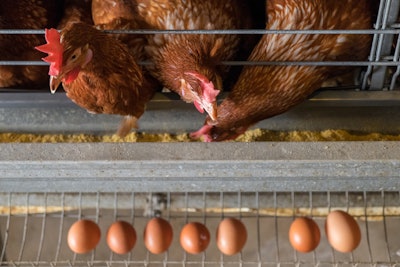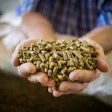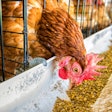
Calcium plays a crucial role in eggshell quality, and most cases of inferior eggshell quality refer back to calcium, at least in my own experience and practice. But calcium is not always the only aspect that affects eggshell quality. Quite often, it is calcium, along with an extra factor, which we will discuss below, that makes matters even worse. So, I present here a very generalized discussion of other nutrients that poultry nutritionists should take into account when examining an existing layer feeding program or designing a new one from scratch.
Macro-minerals
In my opinion, the second most important macro-minerals is phosphorus. This mineral should be fed at the minimum possible level (the opposite of what we do with calcium) so as not to interfere with calcium absorption in the gut. With phosphates being very expensive at the moment, this should not be a difficult proposition.
Also, minimal levels of chlorine should also be employed, but for other reasons rather more complicated, and especially during the warm months of the year. For that, we often use sodium bicarbonate in layer diets or, rather, we should be using it because most do not as it is much more expensive than table salt (sodium chloride).
In addition, magnesium is often forgotten, but recent research has indicated that much better eggshell quality can be achieved with much higher levels of magnesium than previously thought as it strengthens the underlining eggshell membranes.
Finally, the role of potassium remains unclear but, with low-protein diets, potassium tends to be also rather low, which certainly affects the electrolyte balance, and this can cause problems with eggshell quality, again in the summer months. I find that increasing potassium works rather well, always within the electrolyte balance concept.
Micro-minerals
We usually lump these up into a VTM (vitamin and trace mineral) premix and let others determine their levels and concentration. We often assume these others know what they are doing but, honestly, we are all doing our best with an educated guess. The latest authoritative reference was published in 1994 and it is nearly 30 years old. Whether this reference stands is where we all have to make our best educated guess.
In fact, most feed professionals pay little to no attention to this category of nutrients and, as such, we tend to overformulate well above animal requirements as a measure of safety. However, we should not forget that minerals – macro and micro – tend to interact and/or antagonize among themselves in a matrix that is way too complex. So, using the correct trace mineral levels for layers is not as simple as it would be, for example, for broilers. Perhaps, it is here where we should start paying attention to levels in natural feedstuffs, which at present we ignore completely.
Phytase
This successful commercial enzyme/concept is used to release part of phytate-bound phosphorus, which is found in abundance in grains such as corn and soy. It also releases other molecules or enables enzymatic access to otherwise hard-to-reach nutrients.
Some released nutrients may be beneficial, others might not be so much (still pretty much a black box concept). One interesting aspect is that it releases some trace minerals, which are not accounted for in formulation, although research exists to guide us in this direction. In truth, the role of phytase in eggshell quality remains a field of research that could benefit from some extra attention, at least in my opinion. Personally, I am a bit perplexed when it comes to using phytase in egg layer feeds, especially for genetics with an extended egg cycle and/or known to produce large eggs.
Organic acids
This is another obscure field, if only because the plethora of available research has not been properly disseminated through the right channels. Some, but not all, organic acids will aid in better digesting dietary calcium. This is useful in feeds for aging hens. I prefer to use lower levels of total calcium with an organic acid from the beginning. This approach reduces the stress on the organism of having to process through digestion, absorption and metabolism an otherwise enormous amount of calcium. This is a bit more expensive up front, but it pays when the whole cycle is considered at the end.
Vitamins
Vitamin D is essential for efficient absorption of calcium, but overdosing with this vitamin does not mean we maximize such efficiency. So, there is an optimum level, as with everything. In fact, overdosing might even bring about some negative effects. Other vitamins are needed for optimal metabolism, and this might be even more important for aging hens, but we lack definitive data. Some nutritionists increase the VTM premix in the last feed of the egg cycle, whereas others ignore this aspect of nutrition, focusing only on increasing calcium levels.
Calcium sources
It is not just calcium – or, rather, the lack of it – that causes problems. Such problems might come from picking the wrong source of calcium and/or using the wrong blend of fine to coarse limestone (or other calcium source) particles.
Seashells and oyster shells have been shown to improve eggshell quality, but they are expensive and, as such, they are used only when problems arise. Pure calcium carbonate is ideal as we know its exact concentration and availability, but it is also expensive. Limestone, marble dust and other industrial or natural sources are used because they tend to be very inexpensive.
It does not really help that eggs have been traditionally considered an affordable source of nutrients, as their low prices put pressure on using ingredients of lower possible quality.















